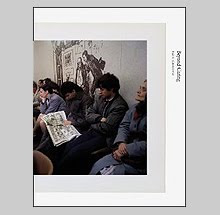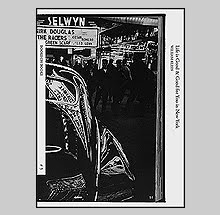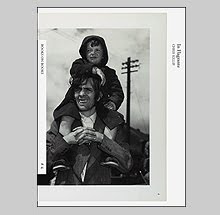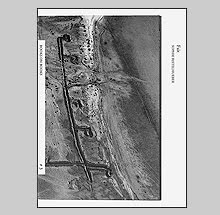Two Diane Arbus catalogs and Hubert's Freaks by Gregory Gibson
At the risk of turning 5B4 Photography and Books into a site that only discusses current auction events I need to stay in the big money realm to direct your attention to two recent auction catalogs and a book of nonfiction on Diane Arbus.
The first is an auction catalog from Christie's in New York called Photographs by Diane Arbus for an auction that took place on Thursday, April 10. This was an auction of 51 prints from the collection of Bruce and Nancy Berman in conjunction with photographs gifted to the LA County Museum of Art, the
The next auction catalog Diane Arbus: Hubert's Museum Work 1958-1963 is a part of an ongoing saga that started with the discovery of previously unknown Diane Arbus photographs taken in Hubert's Museum in New York City during her formative years as a photographer.
Bob Langmuir, a rare book dealer and collector of African Americana purchased a trunk full of ephemera that turned out to hold an archive of the mid-century Times Square sideshow Hubert's Museum. Within this archive were several photographs that after extensive research and authentication turned out to be valuable, previously unseen Diane Arbus photographs. One clue to Langmuir that these prints might be something of importance came early on in his research when he discovered an entry in an address book for Diane Arbus that was once owned by Charlie Lucas, the manager of Hubert's. Next to the address of 131 1/2 Charles Street were the notations 'Morns 8 - 10 Eves 6 - 8' which were possibly the hours at which Arbus scheduled time to photograph the sideshow. Langmuir then tracked down other dealers who had purchased ephemera from the same lot from where the trunk originated and in total, wound up gathering together 27 11 x 14 gelatin silver prints (probably printed by Arbus herself) and a hand written letter to Charlie Lucas that accompanied these prints that were presumably given as gifts. Langmuir, realizing the worth of his find, set about trying to find buyers for the archive including not only the Arbus prints but all of the Hubert's ephemera so that it would be kept together as a valuable historical archive. The Metropolitan Museum of Art expressed initial interest but due to a misunderstanding on how to proceed with the acquisition between Langmuir and Jeff Rosenheim the deal lapsed which eventually led to this auction.
The sale at Phillips de Pury & Company auction house was scheduled for April 8, 2008 for which this catalog was created, but being that this is a story plagued by setbacks, nervous breakdowns, and legal wrangling (the original owner of this material brought a lawsuit against Langmuir claiming that he had no idea that the photographs were valuable and now wants a cut of the action) it would only be proper for the ‘ending’ of this story to never really end as expected, but to continue to be shrouded in mystery. On April 8, 2008 Phillips de Pury & Company canceled the auction at the last minute. Speculation arose that it may have had something to do with the lawsuit but it seems that a private sale was arranged at the eleventh hour.
So this Phillips de Pury & Company catalog turns out to be a valuable contribution to the artist's legacy in terms of history. Even though some of these photographs were made for the performers themselves as snapshots, others indicate Arbus setting off on her journey into this underworld of characters, freaks and the marginal from which she would later become famous. As can be expected not all of the photographs are great or even good (the Arbus estate seemed to feel that revealing some of this work was akin to rifling through the artist's wastebasket) but part of their importance is in seeing how Arbus handles the 35mm frame and the 6 x 6 in the same territory. The photographs have a much different feel from format to format.
It is also interesting to note how the estate handles the authentication process. Upon submission of material and supporting documents that might point to a photograph as being from Arbus, the estate tries to locate the original negative. If the negative is found the print is stamped with a 'Diane Arbus print' stamp, copyright credit and limited reproduction stamps, as well as a certificate of authenticity. When the negative cannot be found authentication is refused -- which seems like a logical regulation to guard against fraud but through the course of this catalog there are a couple images that are still 'pending authentication' that so closely match another that has been authenticated, it seems 99.99% unlikely that they were taken by anyone but Arbus.
This catalog is sure to become a collectors item because of the story surrounding it so I advise seeking out a copy before they get squirreled away by those that will probably try sticker it with a high price. I can't imagine a Phillips de Pury auction catalog commanding a high price but certainly in the book world of today one never knows.
For those of you interested in a detailed account of the story of the discovery of these Arbus photographs by Bob Langmuir, a new book from Harcourt called Hubert's Freaks by the author Gregory Gibson will satisfy.
Hubert's Freaks is a complex story that bridges the different worlds of rare book dealing and ephemera collectors with sideshow culture and Time Square history and the big-money world of art -- all of which are subcultures as seemingly freakish as the subjects in the photographs in question. Ultimately it is a story about the ambition and dreams of Bob Langmuir as he navigates the difficult course of discovering, researching and finally selling the most important 'find' of his career while, at the same moment, his personal life and mental stability were at the point of collapse.
Gibson managed to write an informative and engrossing account of the events leading up to the auction described above by intertwining the stories and jump cutting through history to great effect.
Hubert's Freaks is a fast read and is sure to instill in the reader the notion that real life is definitely stranger than fiction.














